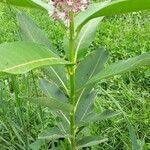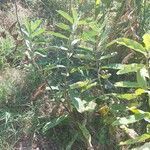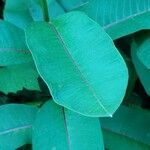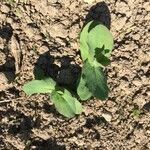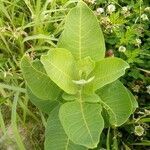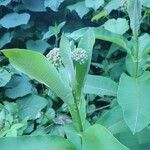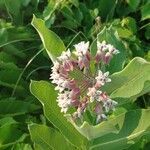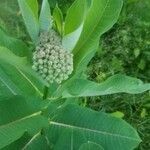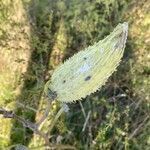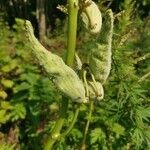Colonial by roots; stems stout, 1–2 m, mostly simple, hairy; lvs thick, narrowly or broadly elliptic to ovate or oblong, 10–15 cm, acute or apiculate, soft-hairy beneath; petioles 5–15 mm; umbels often numerous, terminal and lateral, compactly many-fld; peduncles 3–10 cm; cor nearly purple to nearly green, its lobes 7–10 mm; hoods pale purple, somewhat divergent, 4–5 mm, surpassing the gynostegium, the lateral margins with a prominent, sharp, triangular lobe near the middle; horns short, inflexed; fr erect on deflexed pedicels, 7–12 cm, tomentose and beset with soft, filiform to conic processes; 2n=22. Fields, meadows, and roadsides; N.B. to Va. and n. Ga., w. to Man., Nebr., and Okla. June–Aug. (A. kansana) Native, the specific epithet in error.
More
A herb that keeps growing from year to year. A plant that sprouts like asparagus. The shoots can be 1 m tall. It contains milky juice. The leaves are large and opposite or in rings. They are oblong and pointed at the tip. They are thick and leathery. The flowers occur in a cluster. They are purple. The fruit are pods that are pointed. They occur in pairs.
